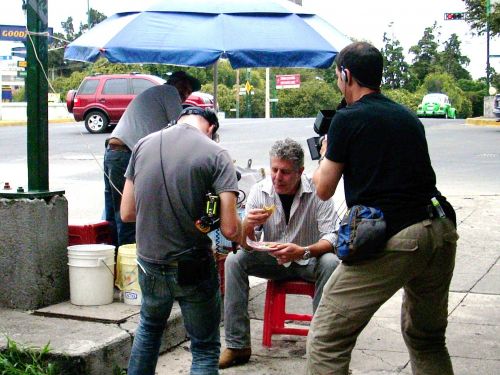
A few weeks ago I got a call from a production company in New York. Called Zero Point Zero, they make Anthony Bourdain’s show No Reservations. They were wondering if I might be able to help them out while preparing to shoot a program in Mexico City.
They didn’t have to ask twice. I admire Bourdain and, having spent a couple of years of my youth working in restaurants, believe his book Kitchen Confidential is essential, one that had to be written. He is also one of the few people in the world I envy: Who wouldn’t like to be paid to travel around the world and eat?
In any case, I not only recommended some of my favorite restaurants, cantinas and stalls for eating street food, I was also able to spend some time with the crew while they were in town shooting. Bourdain – who everyone calls “Tony” – did not disappoint. Indeed, he fulfilled all expectations. The Lenny Bruce of cookery, he frequently spoke in uninterrupted monologues full of jokes of a scatological or sexual nature (sometimes both), jokes that would probably result in a lawsuit if I were to repeat them here.
The show is set to air early next year. Tony is pictured above sampling what is known as a taco sudado – a “sweaty taco,” so-called because after being fried in the morning they spend the next hours steaming in a basket until they sell out. They are the cheapest tacos in Mexico City and, in my opinion, sublime. There will be another post at a future date about Juan Monsalvo, the sweaty taco salesman under the umbrella.




